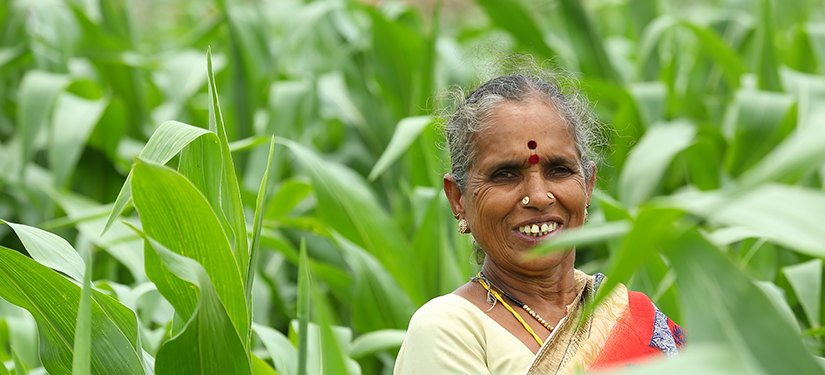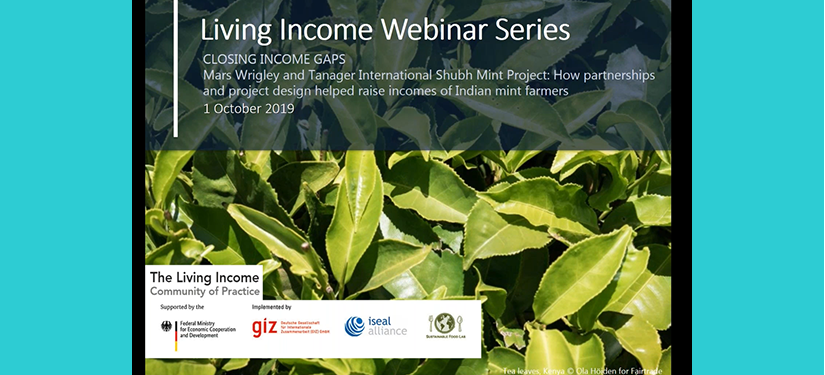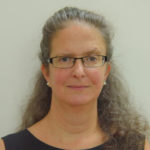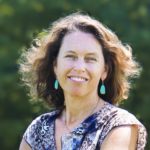
The Sustainable Food Lab is a multi-stakeholder organization galvanizing a diverse coalition of corporate and NGO partners to help address climate change, farmer poverty, and soil health around the world.
Tanager is one of those stakeholders, working with the Sustainable Food Lab to help guide thinking around food systems and smallholder farmer income.
In the interview below, Tanager President Ana Bilik spoke with Sustainable Food Lab Sr. Program Director Stephanie Daniels to unpack the concept of Living Income.
Ana Bilik (AB): Can you explain your role in the living income movement, if we can call it that?
Stephanie Daniels (SD): The Sustainable Food Lab co-founded the Living Income Community of Practice in 2016 with GIZ and the ISEAL Alliance based on the interest of our members to better understand the concept of living wage as applied to smallholder farming situations. Farmers are independent business owners, not contracted employees, and often have multiple sources of income for their family. Living Income starts from the unit of a household and attempts to understand the contribution of all the sources of income and whether this is allowing the family to afford a decent standard of living. The concept of living income came from the need to define how well agricultural interventions, procurement practices, sustainability certifications, and government policies were contributing to the goal of reducing poverty for rural communities. It provides a target to evaluate whether the combined effects of programs and policies are adding up to a decent standard of living among farming households.

AB: Let’s start with the basics: What is living income and how is it measured?
SD: Here is the definition from the Living Income Community of Practice website (a fantastic resource should you wish to go deeper on this topic): Living Income is “the net annual income required for a household in a particular place to afford a decent standard of living for all members of that household. Elements of a decent standard of living include: food, water, housing, education, healthcare, transport, clothing, and other essential needs including provision for unexpected events.” A living income benchmark is the cost of a decent standard of living, which is the cost of these items calculated with geographically specific costs defined by standardized criteria. The Living Income Community of Practice (LICOP) recommends the Anker Methodology as the gold standard to calculate benchmarks.
AB: Why do you recommend using a living income benchmark as opposed to other standardized metrics such as the World Bank poverty line?
SD: The differences between a living income benchmark and the World Bank extreme poverty line are the aspiration and the elements contained within these benchmarks. A living income benchmark calculates the cost of a decent standard of living in a particular place and is intended to provide a goalpost of meeting those costs; while the World Bank extreme poverty line ($1.90/day) is intended to measure income poverty reflecting standards of absolute poverty in the world’s poorest countries, and enable the world to have a standardized metric to measure poverty reduction.
Living income benchmarks include cost of decent food, housing, health care and other essential expenses while the World Bank poverty line calculation is based on the national poverty lines of 15 of the world’s poorest countries. National poverty line calculations often omit costs of housing, health care, education and a margin for savings.
AB: Great, so when you have a benchmark of the costs of living, how do you compare that to the diversity of incomes earned by rural families?
SD: To do a living income analysis, we recommend 3 elements to inform the development of an intervention strategy: a benchmark, a baseline, and an economic model.
A baseline will assess the actual incomes for the population of farmers you are working with. There are a range of ways to do this, but incomes and assets should both be measured. The results of this baseline can be grouped into farmer types or wealth groups and compared to the benchmark. The LICOP has a Technical Advisory Committee of global poverty and rural economics experts, and we have published 3 guidance papers that can assist in your living income analysis.
- Guidance on Calculating Household Income
- Guidance manual on calculating and visualizing the income gap to a Living Income Benchmark
- Applying the Household Economy Analysis to Measure and Address Income Gaps in Agriculture Supply Chains
AB: At Tanager, we work with smallholder farmers around the world. There are many factors to consider as we develop a program with them – how does the Living Income Community of Practice recommend managing that complexity?
SD: Yes, context and agency are critical. Pairing the economic analysis of incomes with a localized agricultural analysis of the region will ensure that the solutions considered are context specific and appropriate for the challenges faced by farmers as well as the opportunities available. Designing interventions with leaders from the farming community ensures rural families have agency in shaping their economic futures and increasing incomes. Put simply, a Living Income analysis allows us to look at the smallholder farmer in a more holistic way, combining various aspects of the economy of a given region to create a more accurate economic picture and better weigh the effects of buyer program, government policies, and NGO initiatives.
Another way to view this is from the lens of a smallholder farmer. Agriculture is difficult work, and profits are tenuous in the best of circumstances. Markets for crops fluctuate, input prices fluctuate, and environmental conditions can be unpredictable. A living income analysis examines farmers cash-on-hand and adds cost of living and return on investment from agriculture, paired with an analysis of the specific geographic context. We can determine how much on-farm income alone needs to increase for the farmers to reach a decent standard of living.
AB: What do you see as factors for a successful living income analysis and strategy?
SD: The primary component to an accurate Living Income analysis is a strong connection to the community and region in question. Income information is highly sensitive for any of us, and relationships of trust and cultural awareness will help facilitate an effective analysis. Knowledgeable agronomist and development partners can help place the analysis in the agricultural, economic, and social context of the farming region. This also increases the likelihood that the analysis will lead to a pragmatic, culturally relevant set of solutions for income improvement. NGO partners such as Tanager are essential to this process.
We had the pleasure of working with Mars Wrigley and Tanager in an early living income and value chain analysis in the mint farming system of Uttar Pradesh India. Together we conducted a Living Income analysis of farming households in Uttar Pradesh. Tanager’s extension team working with the Shubh Mint program understood that family arrangements, such as house size and number of people living in a house, differed among the various cultural groups in the mint producing villages. This is a great example of the type of insight that can come from a skilled, experience local field team.
SD: Now let me ask you a question Ana: what do you see as the results of that living income analysis in the Shubh Mint program and what challenges did you encountered?
AB: Thank you for the question! The living income analysis highlighted that farming households’ incomes are made up of various farm and off-farm activities. So, if one crop only represents 10% of a farming household’s income, even if we double incomes from that crop, it is only a small portion of that household’s income. There are additional opportunities to increase incomes through the other farm and off-farm activities. That analysis pointed to a more holistic way of thinking about working with farming households and communities – something we are calling the Whole Farm Approach. As the name suggests, we are looking at how we can maximize the profitability of farming household through its various income streams, while incorporating women’s economic empowerment and nutrition sensitive interventions to maximize the impact on quality of life.
The challenge with a Whole Farm Approach is building the coalition to make it happen. The fact is that many of Tanager’s donors and partners come at their sustainable sourcing commitments from the perspective of a particular crop. Often when we work with partners on sustainable sourcing initiatives, they are focused on a particular crop they want to buy – And rightly so! That is their core business. Also, collaborations that are considered “pre-competitive” investments in a commodity are also focused on a singular crop. So, we are approaching coalition building a little differently — developing a diverse group of complementing partners to support this more holistic view of the farm to achieve Growth for Good.



